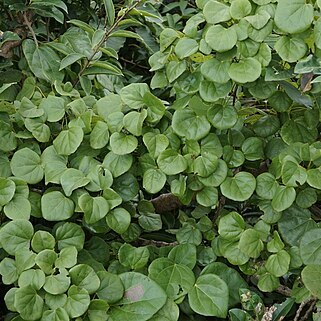Large woody vines, to 20 m or longer. Stems up to 10 cm in diam.; branches and leaves rather similar to Diploclisia affinis, except axillary bud only 1. Petiole usually much longer than lamina; leaf blade not peltate to conspicuously peltate, glaucescent abaxially, leathery. Inflorescences cauliflorous, on old leafless stems, panicles, usually several to many fascicled, ± pendulous, 10-30 cm or longer; flowers light yellow, slightly fragrant. Male flowers: sepals 2-2.5 mm, marked by a dark reticulum, outer whorl elliptic, inner whorl broadly elliptic or broadly elliptic-obovate; petals obovate or rhombic, 1-1.5 mm, apex mucronate or emarginate; stamens ca. 2 mm. Female flowers: sepals and petals as in male flowers except petals 2-lobed at apex; staminodes filamentous; carpels 1.5-2 mm. Drupes yellowish red, narrowly oblong-obovate, 1.3-2(-3) cm, base curved. Fl. Apr, fr. Aug.
A climber.

